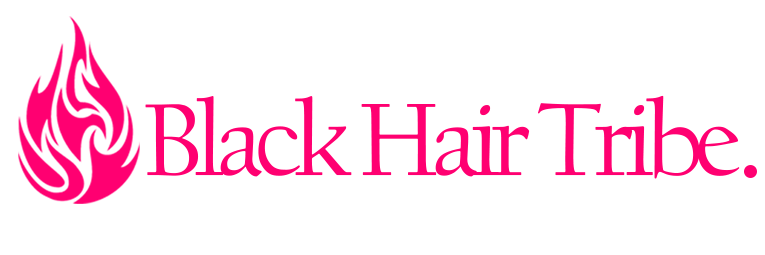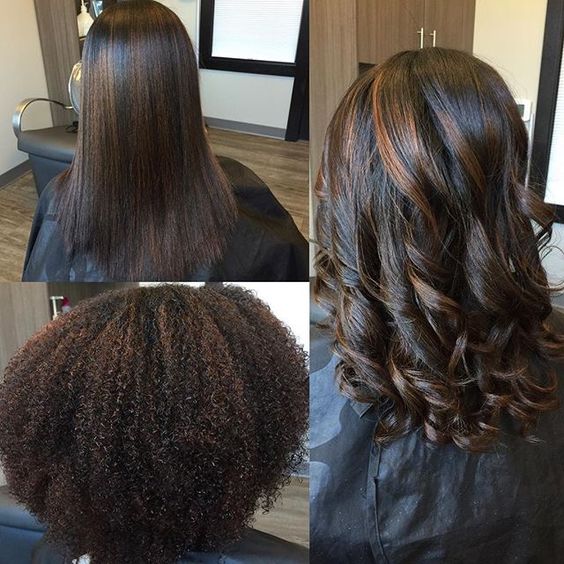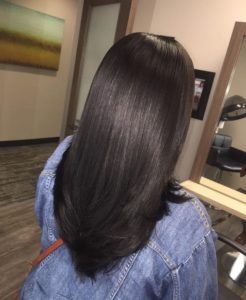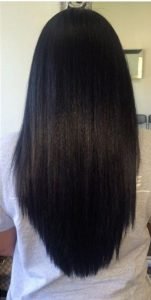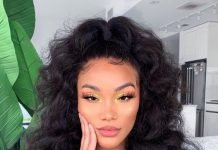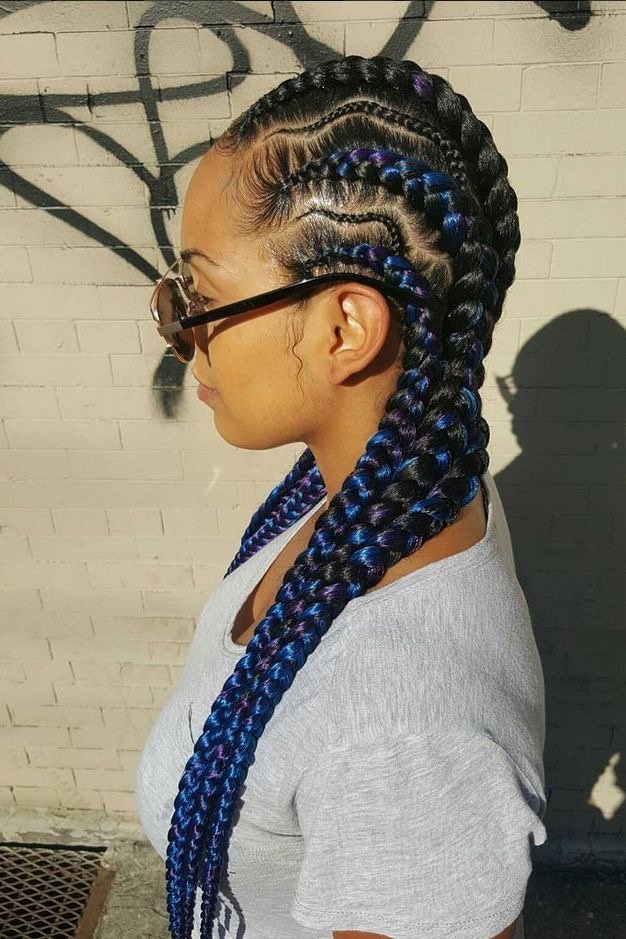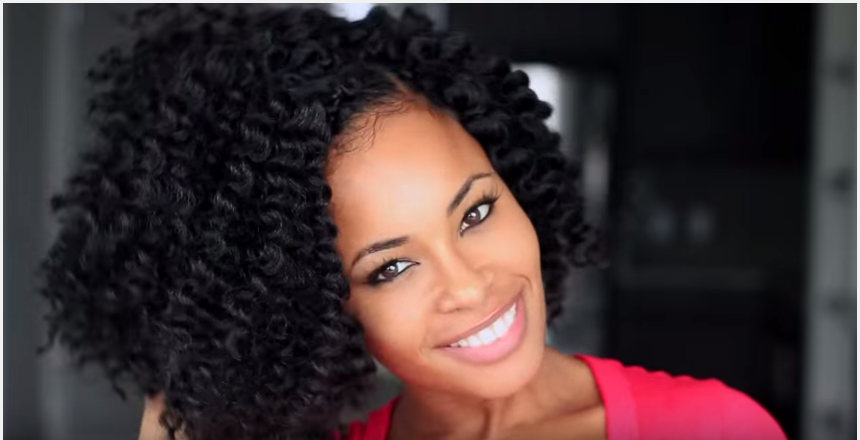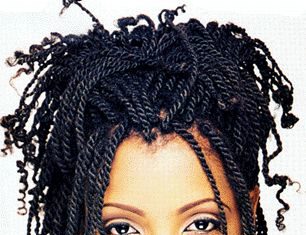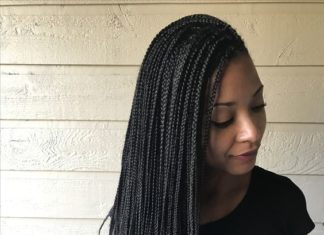Best Methods For Straightening Natural Hair
Having natural hair comes with so many perks, one of which is styling versatility. From curls to twists to braids to afros, natural hair can do it all. Straightening natural hair is another way to change up your look, but it doesn’t come without its challenges: there’s the risk of less than sleek results, hair that will revert back to its natural state at the first sign of moisture, and the threat of heat damage. Let’s take a look at the best ways to straighten natural hair while avoiding irreversible damage.
1Before You Straighten Your Hair
It’s always best to prepare for any style by giving your hair a nice deep cleanse. You want to make sure you remove any product build-up before you straighten your hair. Wash your hair with a sulfate-free shampoo like Eden Bodyworks Peppermint Tea Tree Shampoo. This clarifying shampoo will leave your hair and scalp squeaky clean. Be sure to follow up with a moisturizing deep conditioner like Camille Rose Naturals Coconut Water Penetrating Hair Treatment. Apply a light leave-in conditioner of your choice immediately after rinsing out the deep conditioner.
2Don’t Forget The Heat Protectant
Applying a heat protectant before using any hot styling tool is an essential step in the process of straightening natural hair. Most heat protectants contain silicones which form a barrier over your hair and protect it from the effects of heat. There are many different formulas to choose from, but CHI Silk Infusion is a constant favorite. If you like, you can also choose a leave-in conditioner that contains silicones.
3Drying Natural Hair: Option 1
Blow drying your hair using the tension method (which involves holding your hair taught while moving the blow dryer up and down over each section of hair) is a great way to ensure that your hair remains stretched as it dries. Try to use the lowest heat setting possible to limit the total amount of heat you put on your hair. Ionic blow dryers tend to dry your hair faster and reduce frizz. Make sure you work in small sections when blow drying your hair.
4Drying Natural Hair: Option 2
As an alternative to using a blow dryer, you can do a roller set instead and sit under a hooded or bonnet dryer, both of which use indirect heat to dry your hair. You can use the ponytail method, which involves splitting your hair into sections and securing it in small ponytails before wrapping the hair around the rollers. This method helps keep your roots smooth as your hair dries.
5Drying Natural Hair: Option 3
Curlformers are designed to create uniform, heat-free curls in your hair. They come in different sizes for different hair lengths. Curlformers can also be used to stretch natural hair before you flat iron. Although your hair will not be quite as stretched as it would be if you used a blow dryer, the benefit of using Curlformers is that they don’t require any heat at all, which means that the flat iron will be the only source of heat you’ll need to apply to your hair.
6Drying Natural Hair: Option 4
Another heat-free way to stretch your hair is to put it into four large Bantu knots and let it air dry. Start with clean, damp (not wet) hair that has been thoroughly detangled. If you’re not sure how to do Bantu knots, there are tutorials on YouTube that can show you how. The Bantu knots will keep your hair in a stretched state as it dries. If your hair is very thick or very long, you may want to split it into six Bantu knots so that they can dry faster.
7Flat Ironing Natural Hair
Once your hair is dry, you can start flat ironing one small section at a time. Try not to do more than two passes with the flat iron, to minimize the risk of damaging or burning your hair. It’s important to use a flat iron with an adjustable temperature setting. 450 degrees is the absolute highest temperature you should use, but whenever possible set your flat iron to a lower temperature. Everyone’s hair is different, so you may have to experiment a bit to find which temperature is best for you. While a heat protectant is an absolute must, avoid applying any kind of oil to your hair, as oil can cause your hair to burn.
8Flat Iron Tips
It’s important to use a high-quality flat iron to get the best results and avoid heat damage. Ceramic flat irons are popular because they provide even heat. Titanium-plated flat irons are also popular because of their great ability to conduct heat, which often makes straightening your hair easier. Tourmaline flat irons are also very good, though they are usually the most expensive. Tourmaline is a ground mineral that coats the plates of a flat iron (usually a ceramic flat iron). Both tourmaline and ceramic irons can help seal moisture into your hair and may be less damaging to your hair. Ultimately, the choice is yours. Choose a flat iron that you think will work best for your unique head of hair.
9Texture Manageability Systems
In recent years, kits known as texture manageability systems have become more and more popular. These systems contain products that claim to make straightening easier and/or promise to help prevent your hair from reverting to its natural state. Not to be confused with texturizers, texture manageability systems do not permanently alter the texture of your natural hair. Most kits include a shampoo and a leave-in conditioner that contain ingredients meant to prevent your hair from immediately reverting back to its natural state. You’ll still need to blow dry and flat iron your hair, but you may find that you need to use even less heat, and your results will last longer than usual, even when your hair is exposed to a certain amount of moisture/humidity. You may need to use a sulfate shampoo in order for you hair to completely revert back.
10Preserving Straightened Hair
In order to get the most longevity out of straightened natural hair, a proper nighttime routine is essential. You can wrap your hair around your head in a circular motion and secure it with large bobby pins. Alternatively, you can put your hair in a bun or roll it onto rollers or flexi rods to keep your hair stretched while you sleep. Regardless of which method you choose, it’s important to secure your hair under a silk or satin scarf or bonnet while you sleep.
11Styling Straightened Hair
There are many ways to style straightened natural hair. Many curly styles also look great on straightened hair, like a Bantu knot out. Bantu knots are also a great way to preserve your hair at night, so they serve two purposes. When you take them down in the morning, the result will be pretty, loose waves. Rollers are another good way to add body and bounce to straightened natural hair. You can also opt for buns or updos. Straightened hair lets you take advantage of your true length in a way you might not be able to when your hair is in its natural state, so you may have even more styling options when your hair is straight.
12Pros of Straightening Natural Hair
13Cons Of Straightening Natural Hair
14How To Prevent Heat Damage
Heat damage is a risk you take every time you straighten your hair, but there are steps you can take to avoid it. Dry hair gets damaged easier, so always make sure your hair is moisturized before you straighten it. Using a heat protectant is a really important step that should never be skipped. It’s also important to limit the amount of heat that you use. Choose a blow dryer and a flat iron with adjustable heat settings and use the lowest settings possible. Work in small sections when you’re blow drying and flat ironing your hair; larger sections will take longer to dry and straighten, which will require you to use more heat.
15Making The Most Of Straightened Hair
It’s best if you only straighten your hair occasionally in between styles that require little to no heat. But overall, straightening your natural hair can be a nice break from the norm. When you take the right precautions, you can get great results and avoid heat damage. What’s most important is that you maintain a healthy hair care routine all year round, no matter how often you choose to straighten your hair.
